The All But Forgotten Wonder Drug
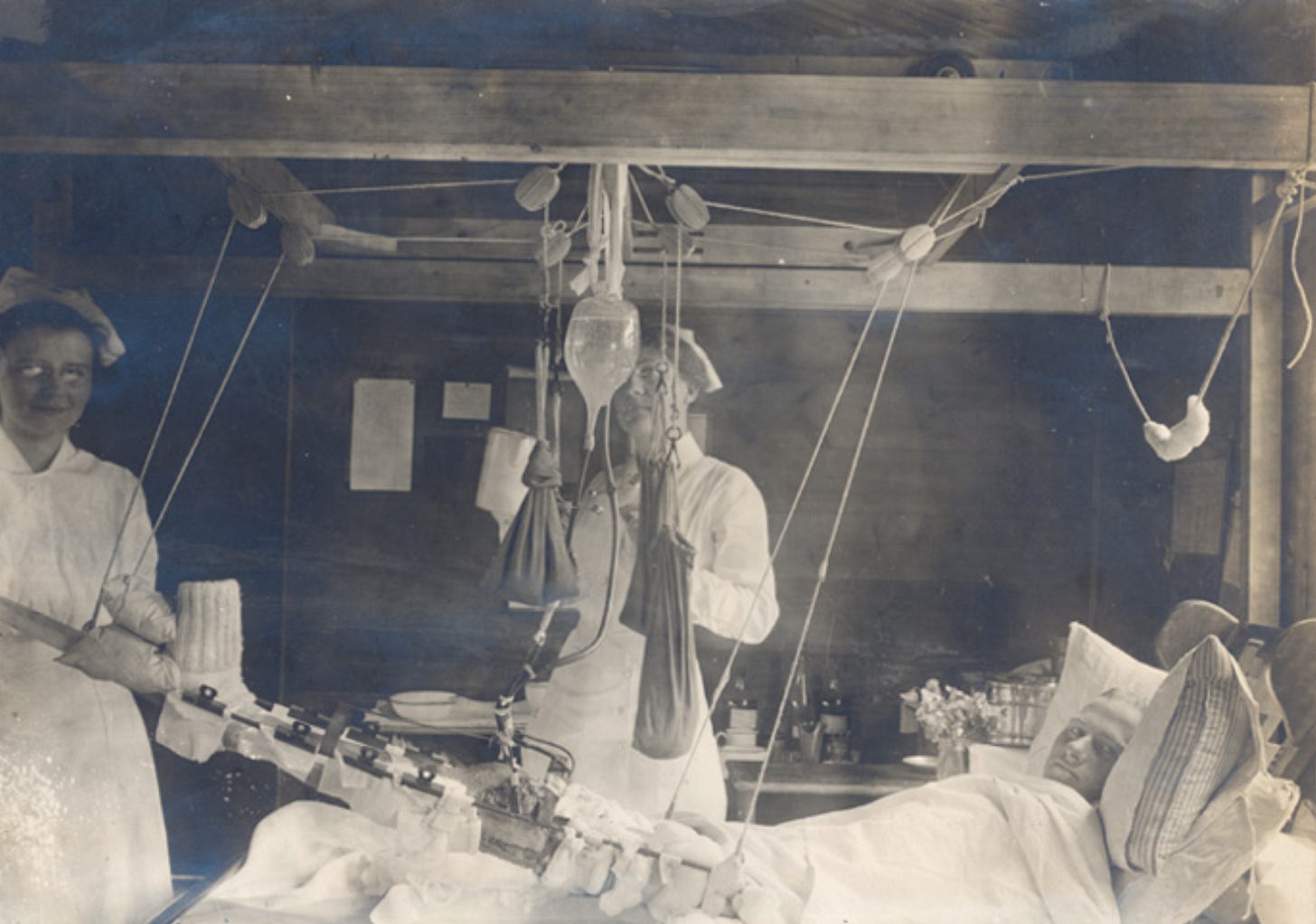
Hypochlorous acid (HOCl) was first identified almost two hundred years ago by the French chemist Antoine Jérôme Balard in 1834. Balard was exploring ways to use chlorine and water to change dyes when he realized that there must be a unique acid in his solutions under certain conditions. Although he didn’t know its exact structure, he named it Hypochlorous Acid. Luckily for us, and what Balard didn’t realize at the time, was that this remarkable compound, which is a vital tool in our immune system’s arsenal, can be replicated for use outside of the body.
The use of hypochlorous acid for wound healing, due to its antiseptic properties, became standardized in the early 1900s.
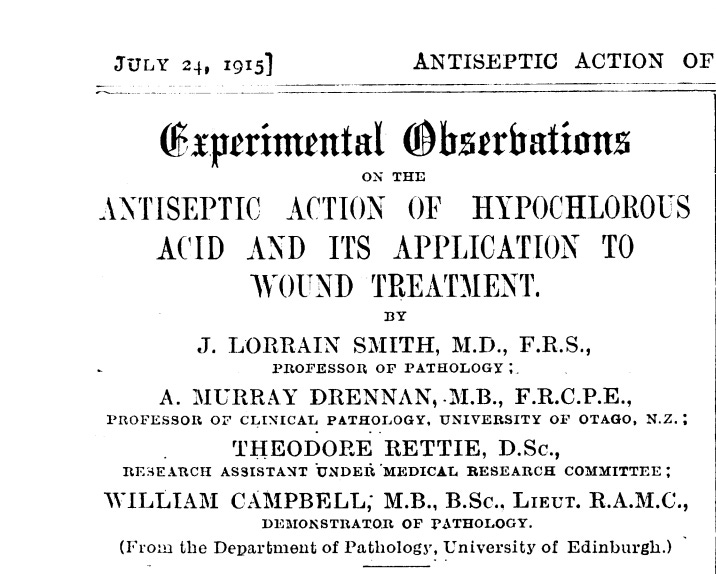
Hypochlorous acid was a critical medicine during World Wars I and II, helping treat chemical burns and clean wounds. It became known as the medicine that saved life and limbs during both world wars.
Later on, HOCl solutions were developed for environmental sanitation and medical treatments for conditions like gangrene, diphtheria, and scarlet fever. By the 1940s, aerosolized hypochlorite solutions were being used in hospitals to control infections and airborne pathogens. Hospitals used to have hypochlorous acid generators on site to alleviate the issue of the rapid degradation of the early, less pure, versions.
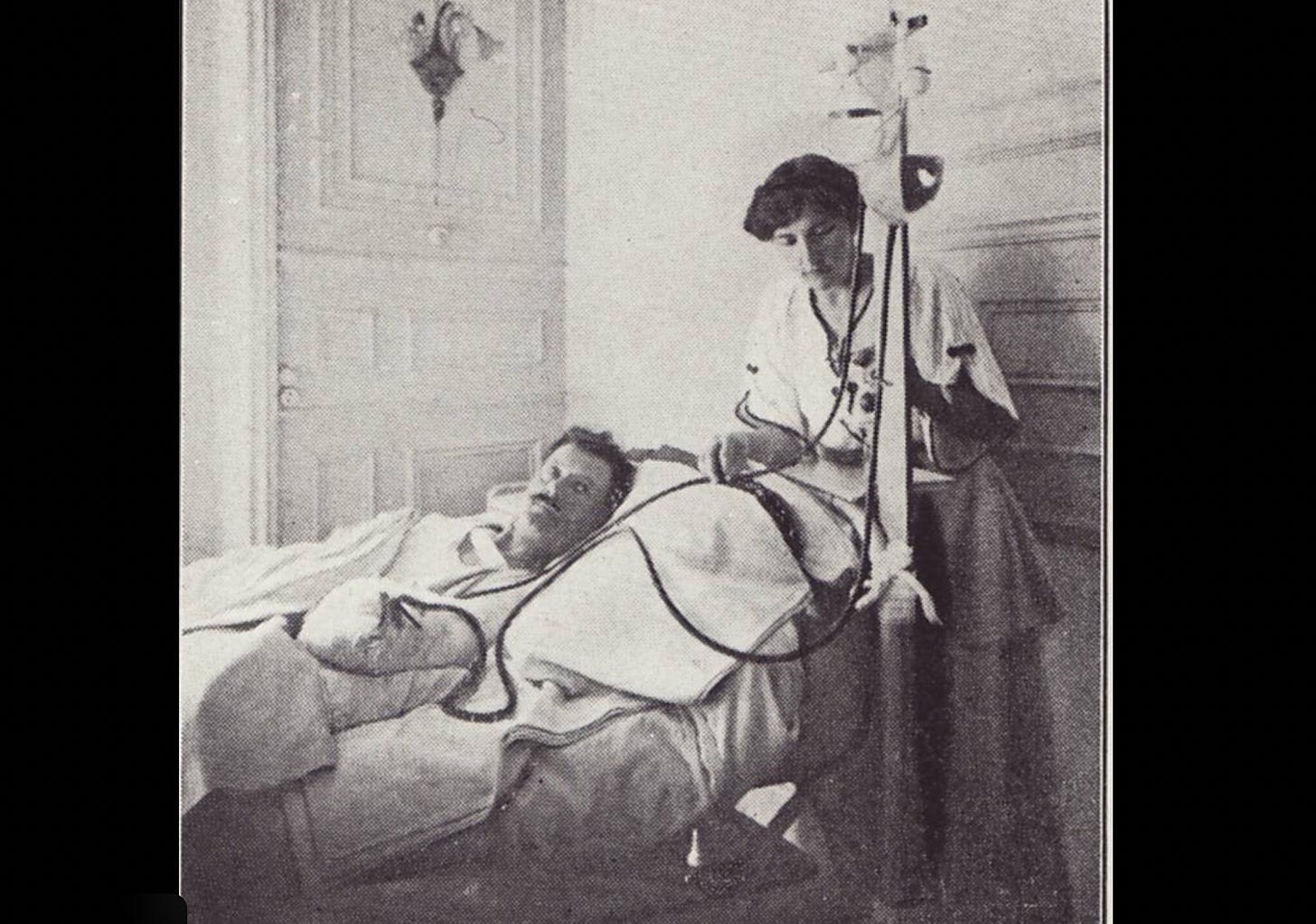
Decades later, scientists found that neutrophils and other tissue-resident phagocytes in mammals naturally produce HOCl. Despite its strength and quick action against pathogens, physiologically produced HOCl has a limited lifespan- which is a good thing. As a key component of the innate immune system, it is necessary to downregulate it once the job is done.

Today, there’s a growing body of scientific research supporting the use of HOCl in a variety of applications. Numerous studies have highlighted its effectiveness in dermatologic and surgical practices. Hypochlorous acid is an entirely natural, non-toxic oxidant that can kill more than 99% of germs and viruses.
As antibiotic-resistant bacterial strains continue to proliferate, microbial solutions that don’t involve antibiotics may be some of the best tools we have to combat infectious disease.
Although the microbial benefits of Hypochlorous Acid have been known for many years, it is only fairly recently that it has been stabilized. Consequently, it is now possible to produce shelf-stable HOCl if you get the manufacturing process controls correct. This is a huge deal.
HOCl stability is variable depending on purity. Stability can be long-term or very short-term, depending on whether there are contaminants in the water used to make HOCl, the manufacturing process used, and the type of container used for storage. Many products on the market and many machines that make HOCl do not stand up to the test of time. Therefore, it is imperative to buy HOCl from a quality source.
I wrote about HOCl years ago, but recent events necessitate an update, as there is a significant regulatory update.
The World Health Organization (WHO) List of Essential Medicines includes a range of medicines and disinfectants considered necessary for a basic healthcare system. The most recent update to the WHO Model List was just released. In that updated list, they have now included Hypochlorous Acid for disinfectant use.
For many years, I have been an advocate for using Hypochlorous Acid for a wide range of indications, because it is non-toxic and environmentally friendly. It works as an antiseptic, an antimicrobial, and as a medicine. It is truly a remarkable product.
My advocacy goes back to the beginning of the COVIDcrisis, when Laura Sextro reached out to me. Laura co-founded a nonprofit called the Unity Project to fight the COVID vaccine mandates in California. She asked me to be the medical director for the Unity Project, and I agreed. Laura is an amazing woman: a strong, ethical leader and organizer. When the COVID vaccine mandates ended, rather than try to repurpose the Unity Project for another mission, she decided to move on with her career.
Laura is one of the most moral people I know, and she is also one of the most talented business leaders I know - with a long history of successful business ventures. As a business leader, she likes to combine her talent for moving companies forward with a product that can do some good in the world. Hence, her involvement with Hypochlorous Acid. This isn’t just about a business opportunity for her; it is about world health.
Not long after the Unity Project wrapped up a couple of years ago, she reached out to share her exciting new journey, which is leading a company called Curativa Bay alongside its founder, Bill Maher (no not the “Politically Incorrect” comedian). I had the pleasure of meeting Bill and his quiet dynamo wife, Manny, who delved into all the details of Hypochlorous Acid. I must admit, despite all of my experience and training in biochemistry, immunology, and pathology, I had never heard of Hypochlorous Acid before COVID-19! After diving into a lot of research, I wrote my first article about the stabilized product in 2023. Since then, I’ve kept in touch with Laura, and she kindly convinced me to become a spokesperson for the HOCl company called Curativa Bay, and here I am, happy to share my knowledge.
Imagine, if you will, a world in which the human body naturally produces a simple chemical compound by a chemical reaction requiring only pure water and pure salt to produce an anti-microbial which is toxic to a wide range of bacteria and viruses, but not toxic to humans. A product in use for almost 200 years, but a product that had never been stabilized for long-term storage and distribution.
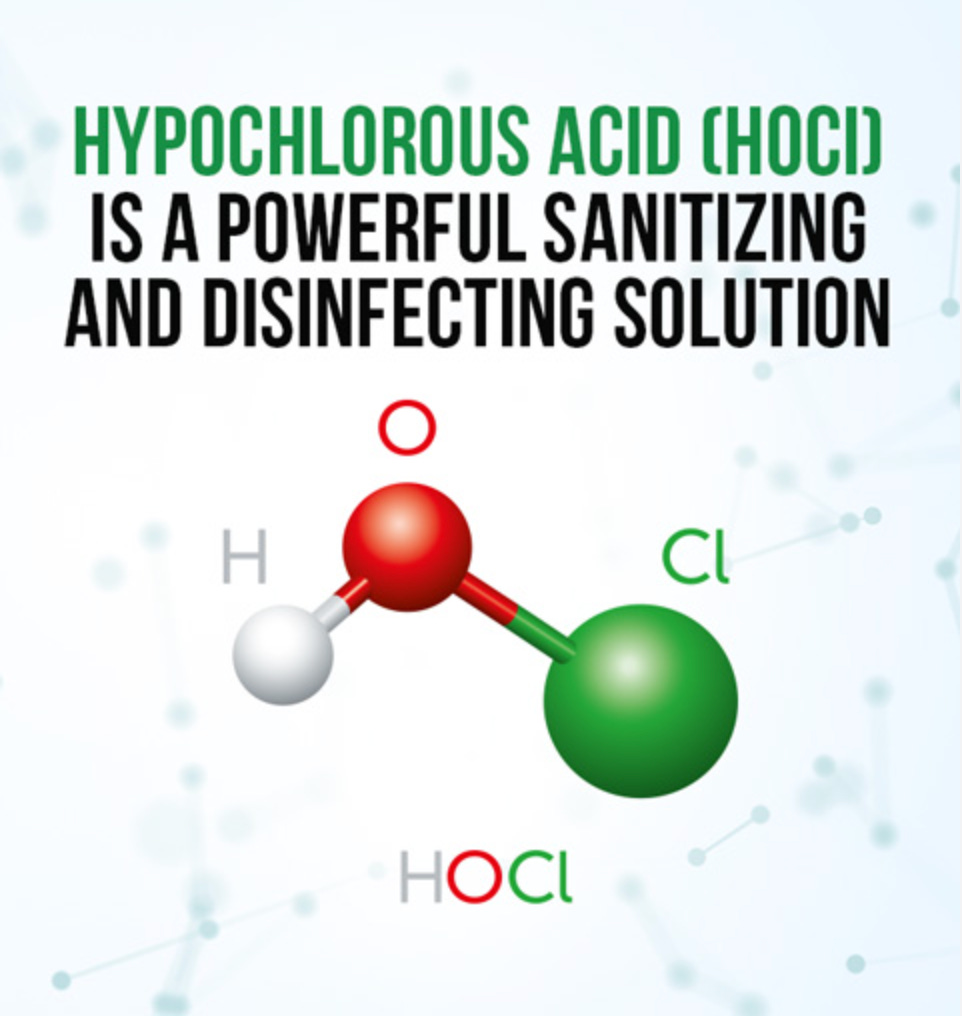
Imagine, if you can, that some clever innovative American engineers found a way to stabilize this compound. Curativa Bay then tested it for anti-viral activity against the virus SARS-CoV-2, and found (as had been demonstrated with a wide range of other viruses and bacteria) that it inactivated a highly infectious virus called SARS-CoV-2.
They then took their data to the FDA, believing it would be an important way to reduce the damage and spread of this pathogen, but the FDA, in its infinite wisdom, basically told them to go pound sand and threatened legal action if these engineers tried to promote their findings. Undeterred by the FDA's intransigence, these clever American engineers then went to the EPA and convinced that agency to approve their non-toxic antimicrobial for disinfecting surfaces.
The whole “hand and surface disinfectant” industry is so heavily invested in a variety of toxic quaternary ammonium compounds, chlorine-based products, alcohols, and soap formulations that no one would consider anything else.
Imagine, just for a moment, for the sake of argument, that early in the COVIDcrisis it became clear that the major route of infection and transmission of SARS-CoV-2 was intranasal (but also oral and ocular infection), and that a simple nose wash (nasal lavage) with a dilute solution of stabilized Hypochlorous acid could drastically reduce the risk of disease and transmission associated with SARS-CoV-2 infection. And this was demostrated in peer-reviewed papers over and over again.
A specific formulation of dilute Hypochlorous acid has been made to cleanse the nasal passage (search for - “Gentle Nose Cleanser” on the Curativa site), but at this point the manufacturer does not make any specific claims of safety or efficacy.
HOCL achieved clinical endpoints that the much touted, highly promoted, and frequently mandated genetic Spike-based COVID vaccines never were able to achieve.
There are more than ten thousand scientific papers published on HOCl, its chemistry, natural and synthetic production, safety, and all the powerful effects it has on germs of all types, including coronaviruses, and even Mad Cow prions!
Surely this must be an imaginary parallel universe. There is no way that the FDA would have blocked rather than expedited the availability of such lifesaving treatment using an inexpensive agent which is less toxic than povidone–iodine!
But surely, the fact that Hypochlorous Acid can relieve allergic symptoms, sinusitis, and chronic sino-nasal symptoms would compel the FDA to take notice, since there are plenty of peer-reviewed studies documenting this fact.
I am very sorry to tell you that what I am describing is not some parallel, dysfunctional universe in which the FDA has been transformed into a bootlicking sycophantic captured promoter of the commercial interests of the patented pharmaceutical industry, or yet another sordid example of the US Federal Imperial Administrative State making arbitrary and capricious decisions which have indirectly led to a large unnecessary loss of life. Unfortunately, as is often the case, both scenarios are clearly true in THIS universe.
All that said, as stated above, the World Health Organization in a stunning update this month, has announced that hypochlorous acid has been added to the list of essential medicines as a disinfectant.
Report of the 25th WHO Expert Committee on Selection and Use of Essential Medicines, executive summary (2025)
The Expert Committee recommended that an explicit listing for hypochlorous acid solution as an environmental disinfectant, separate from its general inclusion as a chlorine-based compound, be included on the EML and EMLc to aid differentiation between hypochlorite and hypochlorous acid products.
The Expert Committee did not recommend inclusion of hypochlorous acid solution for topical use in antisepsis and wound care, because the application did not provide an updated comprehensive review of clinical studies to inform the decision-making, as was the request of the Expert Committee in 2021.
Unfortunately, HOCL wasn’t included for topical use and in wound care (yet) in the WHO’s list. This is a travesty, as many clinical trials have documented its effectiveness and safety profile for these uses.
I’m unsure why the WHO subcommittee didn’t compile the list of clinical trials asked for - because there have been lots of completed clinical trials showing how effective this medicine is. One guess might be that Hypochlorous Acid isn’t under patent protection, so there’s little financial incentive for big pharma to promote it’s use for global health.
There are over 100 clinical trials ongoing or completed, on the use of Hypochlorous Acid listed on clinicaltrials.gov. These are clinical trials in progress or completed for wound care, diabetic care, allergies, sinus infections, and many, many more medical indications. A few of the completed clinical trial are linked here.
The uses for HOCL as a disinfectant are vast, and the truth is that the “traditional” mixtures and potions now being used as disinfectants have significant toxicity risks.
The most commonly used disinfectant in medical facilities is quaternary ammonium compounds (QACs), often called quats. However, concerns are rising about the health and environmental effects of quats. Studies have found this substance in human blood samples, with one study detecting them in 80% of participants, and they've also been found in breast milk. This indicates widespread human exposure, with children possibly at higher risk due to more frequent hand-to-mouth contact. Long-term, low-level exposure has been linked to health problems such as skin and respiratory irritation, allergic reactions, asthma, and reproductive toxicity.
Jill and I live on a horse farm, we have lots of animals - and we are in and out of the house a lot, as are the dogs and occasionally various avian species. We garden, take walks, clean up animal manure, work in the dirt, eat healthy (for the most part) - and we pride ourselves that we rarely get sick.
That said, when you have horses, you have horse injuries. Equine injuries are prone to infection and skin infections, so we have had lots of opportunities to use Hypochlorous Acid, and frankly, the results have been astounding. For one thing, the pain of dousing with HOCl is the same as dousing with cold water, unlike many other antiseptics, which also cause tissue damage. Horses don’t have a lot of pain tolerance, so having a product that is relatively painless is a very good thing. Likewise, using HOCl will be much less painful than many other antiseptics for human use.
We use the solution in the gallon container, and sometimes it is a little weird to apply because it is like applying water. So, we use a spray bottle (Curativa also sells a spray bottle version for pets). There isn’t a color or texture to the spray. But the stuff works! The gallon of HOCl and the spray that we received two years ago has lasted and lasted. It is our main go-to for the initial treatment of wounds, skin irritations, etc.
Although I am asthmatic, Jill and I both have good functioning immune systems, particularly for being “elderly.”
However, many people are immunosuppressed, vulnerable to viruses, or have young children who bring viruses into the home. While I haven't tried the foggers that Curativa Bay sells, I've heard they are effective and among their best sellers.
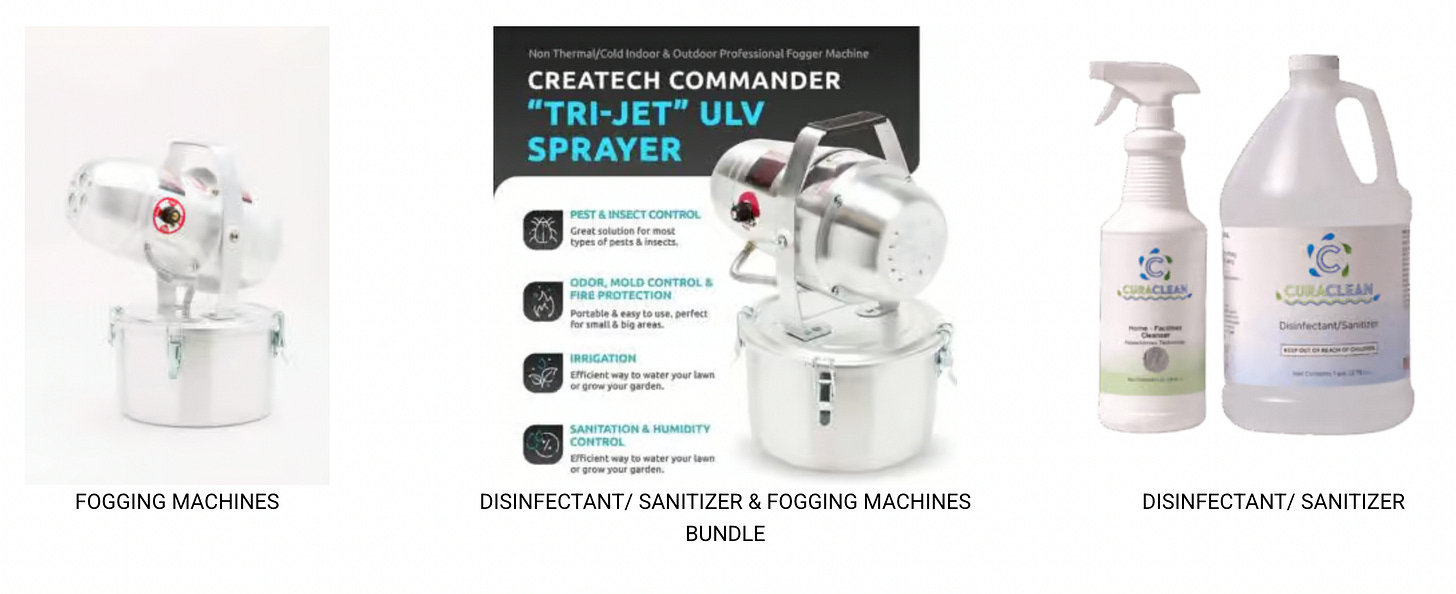
As a non-toxic, safe, and effective disinfectant and skin care solution, Hypochlorous has the potential to revolutionize the way we think about health and wellness.